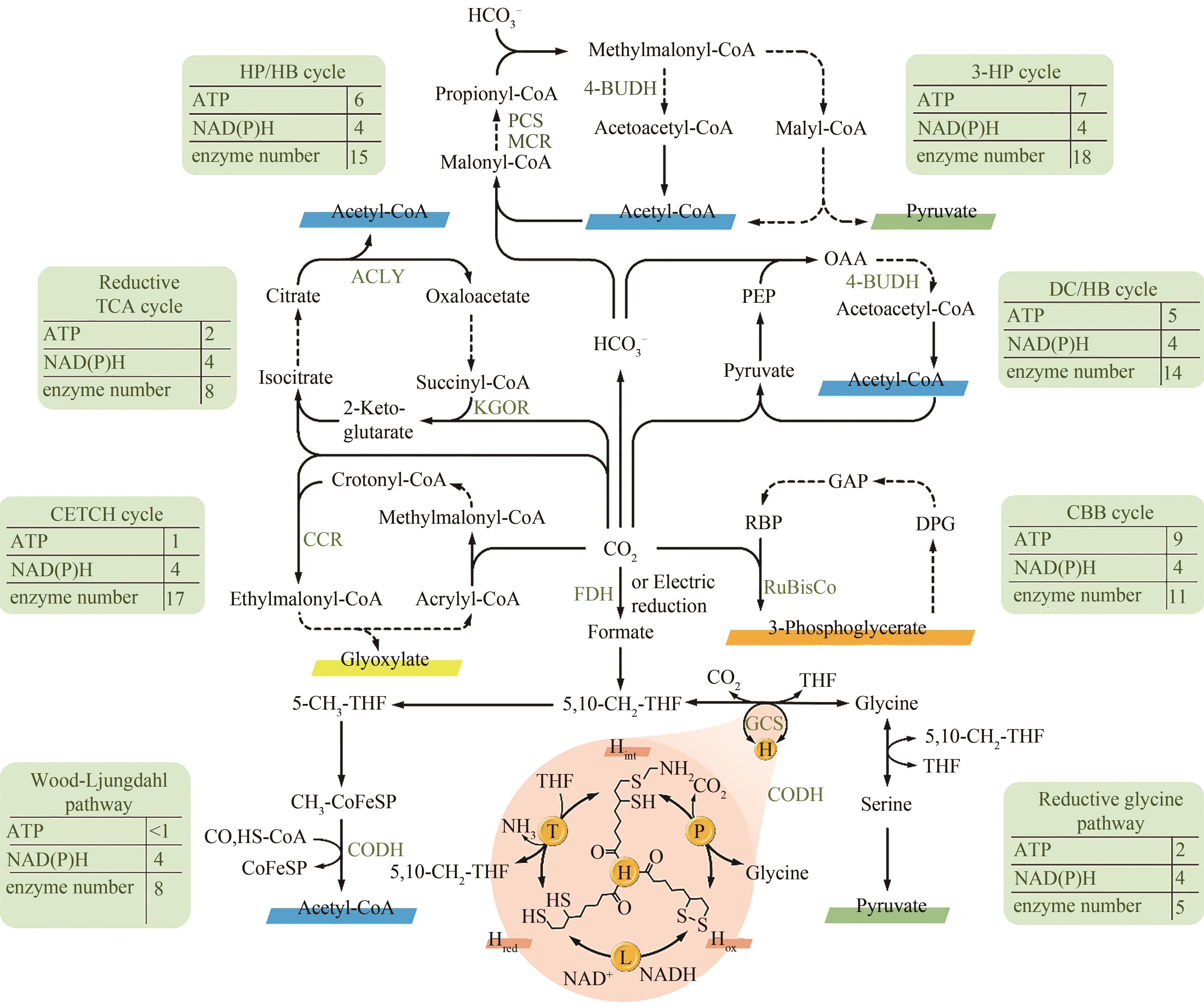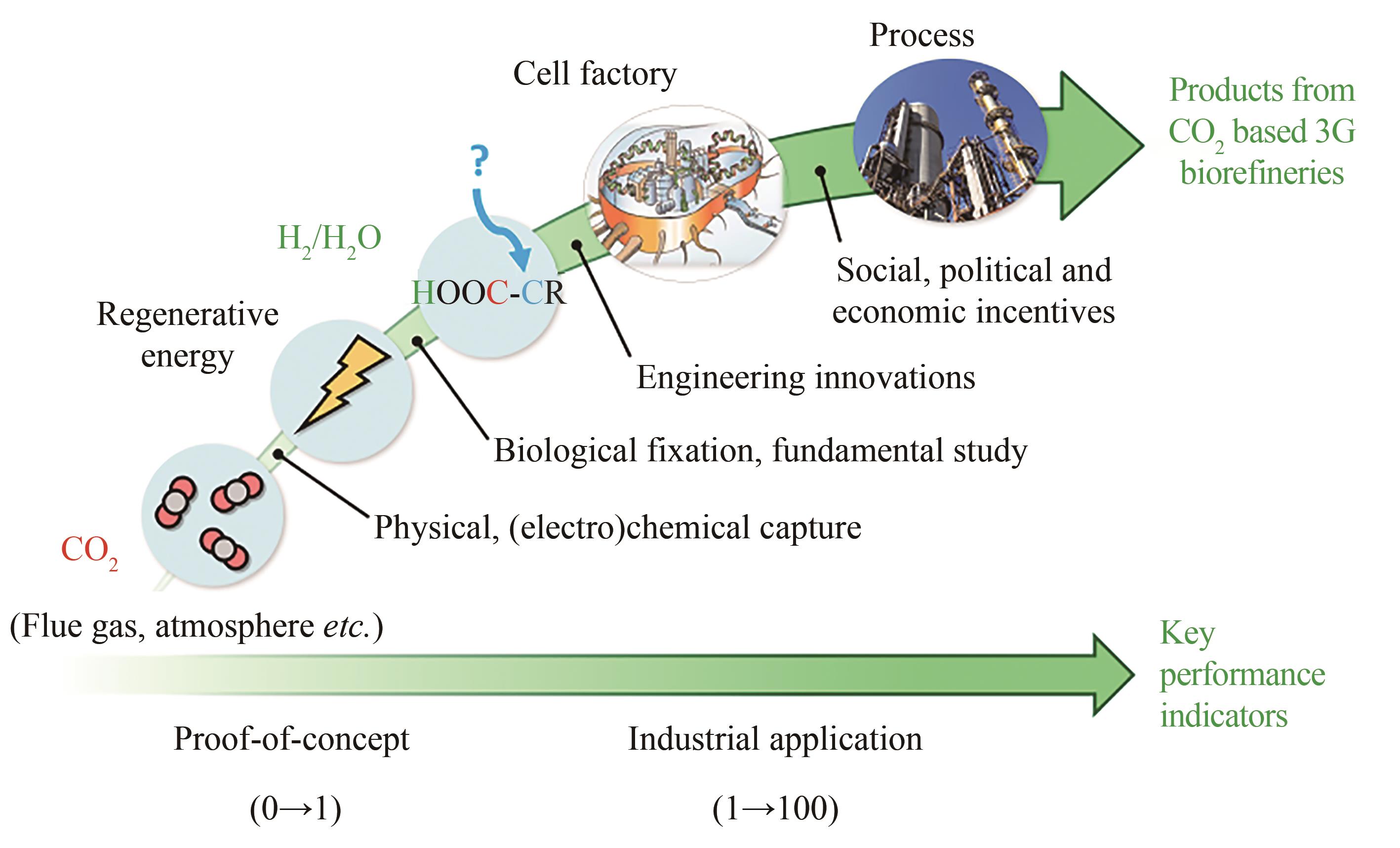| 1 |
LIU Z H, WANG K, CHEN Y, et al. Third-generation biorefineries as the means to produce fuels and chemicals from CO2 [J]. Nature Catalysis, 2020, 3(3): 274-288.
|
| 2 |
DOUCE R, BOURGUIGNON J, NEUBURGER M, et al. The glycine decarboxylase system: a fascinating complex[J]. Trends in Plant Science, 2001, 6(4): 167-176.
|
| 3 |
YISHAI O, BOUZON M, DÖRING V, et al. In vivo assimilation of one-carbon via a synthetic reductive glycine pathway in Escherichia coli [J]. ACS Synthetic Biology, 2018, 7(9): 2023-2028.
|
| 4 |
KIM S, LINDNER S N, ASLAN S, et al. Growth of E. coli on formate and methanol via the reductive glycine pathway[J]. Nature Chemical Biology, 2020, 16: 538-545.
|
| 5 |
TASHIRO Y, HIRANO S, MATSON M M, et al. Electrical-biological hybrid system for CO2 reduction[J]. Metabolic Engineering, 2018, 47: 211-218.
|
| 6 |
BANG J, LEE S Y. Assimilation of formic acid and CO2 by engineered Escherichia coli equipped with reconstructed one-carbon assimilation pathways[J]. Proceedings of the National Academy of Sciences of the United States of America, 2018, 115(40): 9271-9279.
|
| 7 |
GONZALEZ DE LA CRUZ J, MACHENS F, MESSERSCHMIDT K, et al. Core catalysis of the reductive glycine pathway demonstrated in yeast[J]. ACS Synthetic Biology, 2019, 8(5): 911-917.
|
| 8 |
SONG Y, LEE J S, SHIN J, et al. Functional cooperation of the glycine synthase-reductase and Wood-Ljungdahl pathways for autotrophic growth of Clostridium drakei [J]. Proceedings of the National Academy of Sciences of the United States of America, 2020, 117(13): 7516-7523.
|
| 9 |
REN J, WANG W, NIE J, et al. Understanding and engineering glycine cleavage system and related metabolic pathways for C1-based biosynthesis [M]// ZENG A P, CLAASSEN N. One-carbon feedstocks for sustainable bioproduction. Springer (In print).
|
| 10 |
ZHANG H, LI Y C, NIE J L, et al. Structure-based dynamic analysis of the glycine cleavage system suggests key residues for control of a key reaction step[J]. Communications Biology, 2020, 3(1): 756.
|
| 11 |
BOUZON M, PERRET A, LOREAU O, et al. A synthetic alternative to canonical one-carbon metabolism[J]. ACS Synthetic Biology, 2017, 6(8): 1520-1533.
|
| 12 |
CAI T, SUN H B, QIAO J, et al. Cell-free chemoenzymatic starch synthesis from carbon dioxide[J]. Science, 2021, 373(6562): 1523-1527.
|
| 13 |
SIEGEL J B, SMITH A L, POUST S, et al. Computational protein design enables a novel one-carbon assimilation pathway[J]. Proceedings of the National Academy of Sciences of the United States of America, 2015, 112(12): 3704-3709.
|
| 14 |
LEGER D, MATASSA S, NOOR E, et al. Photovoltaic-driven microbial protein production can use land and sunlight more efficiently than conventional crops [J]. Proceedings of the National Academy of Sciences of the United States of America, 2021, 118(26): e2015025118
|
| 15 |
UTESCH T, SABRA W, PRESCHER C, et al. Enhanced electron transfer of different mediators for strictly opposite shifting of metabolism in Clostridium pasteurianum grown on glycerol in a new electrochemical bioreactor[J]. Biotechnology and Bioengineering, 2019, 116(7): 1627-1643.
|
| 16 |
HONG Y, ZENG A P. Bioprocesses based on one-carbon mixotrophy[M]// ZENG A P, CLAASSEN N. One-carbon feedstocks for sustainable bioproduction. Springer (In print).
|
| 17 |
STEFFENS L, PETTINATO E, STEINER T M, et al. High CO2 levels drive the TCA cycle backwards towards autotrophy[J]. Nature, 2021, 592(7856): 784-788.
|


